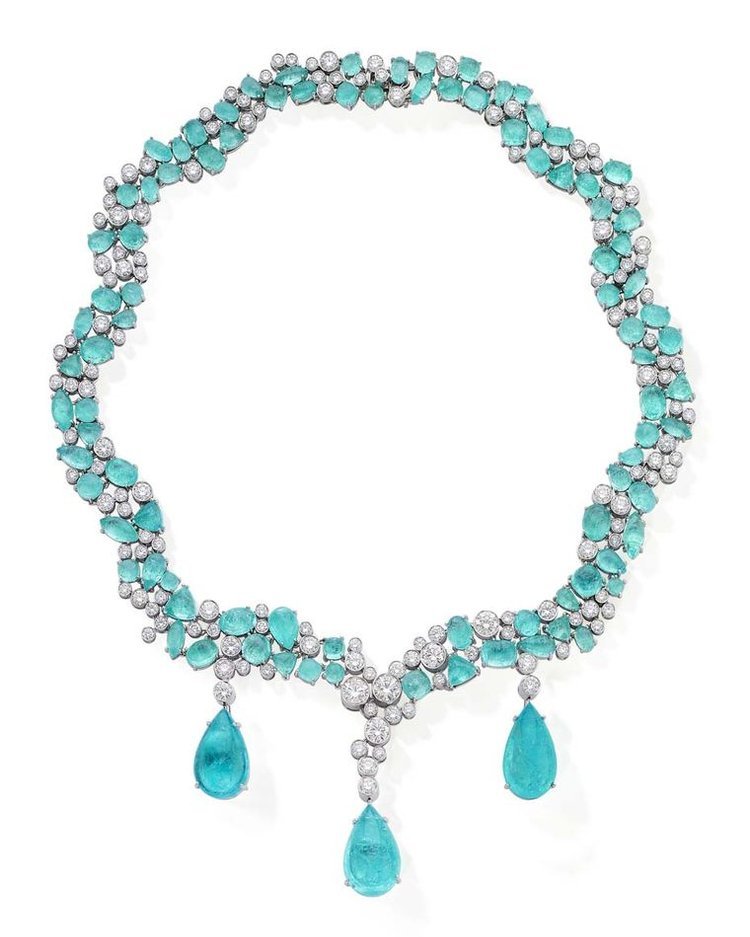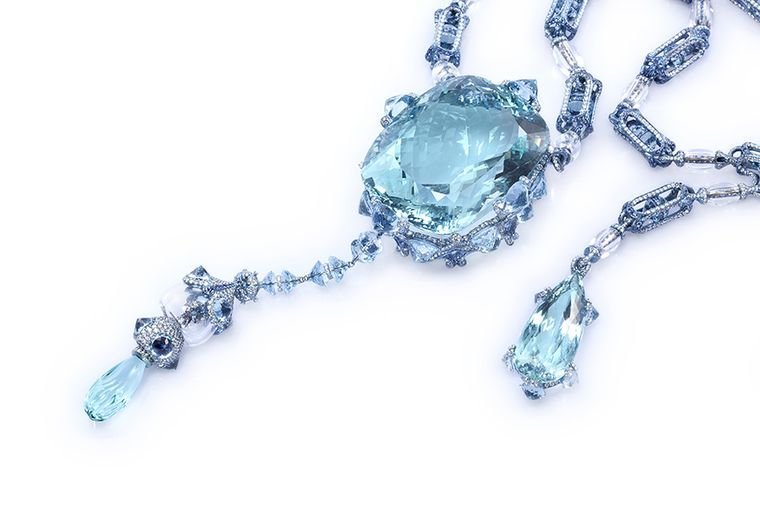A SHORT GUIDE TO PARAIBA TOURMALINES
The assault of coloured jewellery in the past decade has in no doubt been lead by the Paraiba tourmaline and it is beautiful, genuinely rare stones such as these that have blurred the nomenclature in gemmology between precious and semi precious stones. Traditionally, only diamonds, sapphires, rubies and emeralds were classed as precious- but there is only one Paraiba mined for every 10,000 diamonds and specimens of over 3 carats are pretty scarce. It is this kind of gem that has made the usage of the term semi precious rather frowned upon.
Paraiba Reef Ring by David Morris, set with a specimen from Mozambique.
Paraibas are named after the province of their source, the Federal State of Paraiba in Brazil. They are complete newcomers to the market as the first specimens were only mined in 1989. This was solely due to the determination of a man called Heitor Dimas Barbosa who scrabbled around in the copper rich hills of Paraiba for years, convinced that something special was waiting to be discovered. His efforts were duly rewarded.
Tourmalines in themselves are not particularly rare, but the intense, vivid, bluish neon hue of the Paraiba renders it incomparable to anything else. It owes its brilliant turquoise colour to traces of copper in its mineral structure. They became popular almost from the moment of discovery and today remain amongst the most expensive gemstones in the world. Five figure sums per carat are not uncommon, usually unheard of in lesser tourmalines. Because of their rarity, each stone is normally custom cut in order to maximise the light and vitality that characterise this stone. The defining factor in a stone’s value is without doubt the intensity of colour, rather than the size. Clarity, as always, plays an important factor.
Paraibas have now also been found in other parts of Brazil and much further afield, in Nigeria. Purists claim that these are not true stones but chemically they are identical. Even expert gemmologists have a hard time determining a stone’s origin. If you were to cut out the shapes of Africa and South America and join them together as they would have been millions of years ago, Nigeria nestles well with the north east corner of Brazil- therefore it is not illogical to deduce that the stones originated in similar geological conditions.
The imagination of almost every fine jeweller imaginable has been captured by the neon of the Paraiba; it has sprung up in the work of Wallace Chan, Anna Hu, Martin Katz, Van Cleef and Arpels and Theo Fennell to name but a very few. Paraiba tourmalines have advanced the popularity of coloured stones, the intensity of their colour making collectors more adventurous in their choices and thus leading the way in breaking the stranglehold of classic stones on jewellery design.
The Ocean Necklace by Wallace Chan set with important paraibas.




